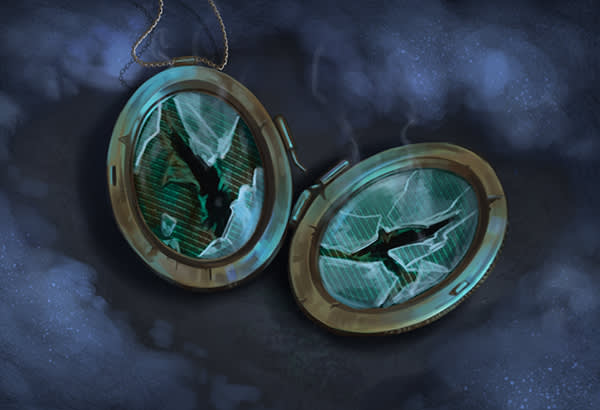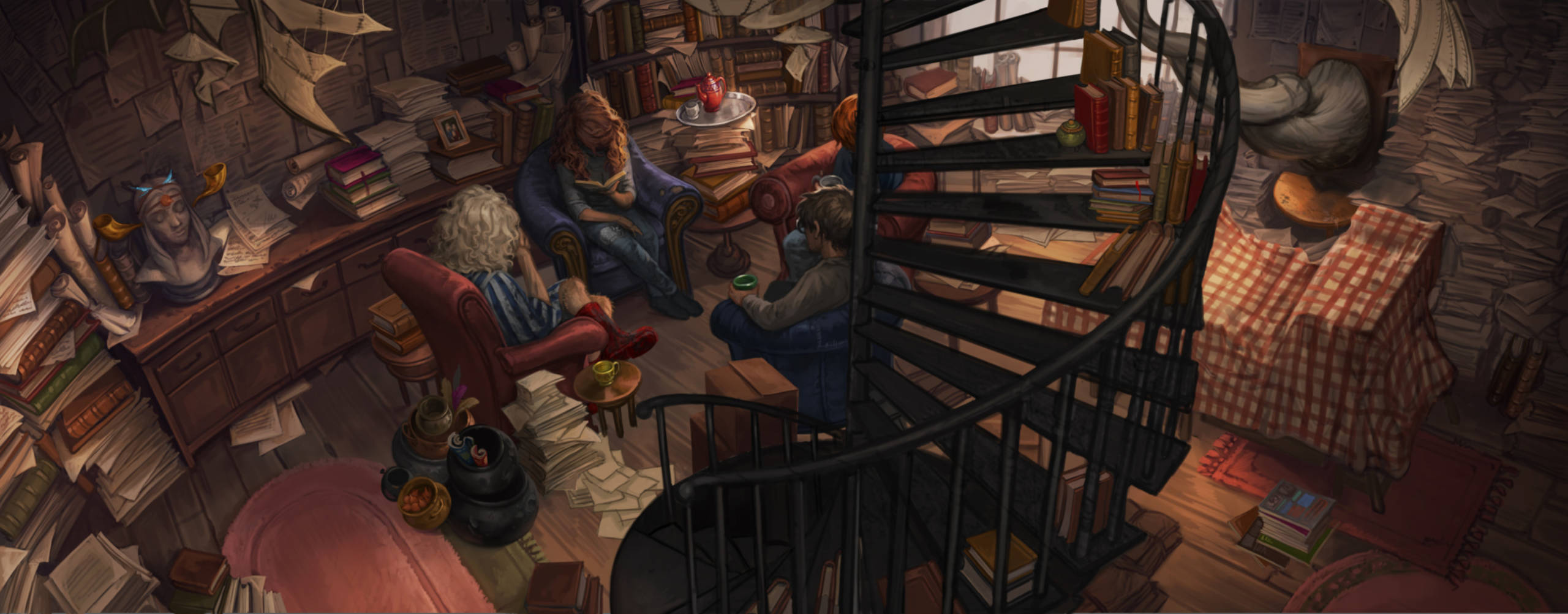
Hermione might have dismissed the Hallows as a simple fairy tale, but they ended up proving to be all too real – and the details Beedle gave in ‘The Tale of the Three Brothers’ were startlingly accurate.
And the Hallows weren’t the only time Beedle demonstrated the long, curious history of the magical world. From Babbitty Rabbitty, to the warlock’s Horcrux-like hairy heart and the determined Hopping Pot, Beedle highlighted some pretty developed magic…
‘The Wizard and the Hopping Pot’: sentient magical objects
Dumbledore’s view of ‘The Wizard and the Hopping Pot’ – the tale of a bewitched pot that wouldn’t stop hopping unless its Muggle-hating owner helped his father’s neighbours – was that the story, with its pro-Muggle message, was ahead of its time.
However, it also featured a significant piece of magic. How exactly did the creator of the Hopping Pot influence an object even after his death, and – what’s more – enable it to make moral judgements?
If we compare the Pot to other magically activated objects, such as Mr Weasley’s enchanted Ford Anglia or the Hogwarts Sorting Hat, it seems a particular enchantment was needed to bewitch it into fulfilling its function, such as the pot hopping, the car flying, or the Hat sorting students.
Making judgements seems to be learned behaviour, though. The car was ‘turned wild’ by the Forbidden Forest and the Sorting Hat was happy to talk Harry through his Slytherin anxieties after Harry comes across the hat again in Dumbledore’s office.
So maybe the Hopping Pot was already enchanted and just absorbed enough of its original owner’s intentions to enforce them. We’ll never know, but on a related note, it seems likely Mr Weasley could have picked up some tips from the Hopping Pot’s creator.

‘The Fountain of Fair Fortune’: the Pensieve
Like Harry pretending to feed Ron the Felix Felicis potion, the Fountain of Fair Fortune proved more tricksy than lucky – none of the three witches or their Muggle companion suspected it wasn’t actually enchanted. It was, in fact, the choices they each made in reaching the Fountain that led to them enjoying long, happy lives. Which sounds like something Dumbledore might advise, funnily enough.
There’s another moment in ‘The Fountain of Fair Fortune’ that brings Dumbledore to mind. Specifically, something Dumbledore, as Headmaster of Hogwarts, owned – the Pensieve. ‘The Fountain of Fair Fortune’’s Amata used her wand to withdraw memories, then dropped them into the rushing water that was the Fountain’s final obstacle. But unlike Dumbledore, Amata didn’t study them – she let her memories wash away. In doing so, all her regrets disappeared and she no longer had need of the Fountain.
The Hogwarts Pensieve didn’t work like that: it was a container, after all, not a stream. Still, drawing out memories is pretty clever, so Amata must have known some advanced magic. And she was also wise enough to know when she was happy. No wonder Sir Luckless flung himself at her feet.

‘The Warlock’s Hairy Heart’: Horcrux magic
In terms of its storybook princess, ‘The Warlock’s Hairy Heart’ was closest to a Muggle fairy tale – but the warlock’s actual hairy heart was rooted firmly in the wizarding world.
The warlock, Beedle told us, used Dark Arts ‘to ensure his immunity’ from love. We later discover this meant he’d removed his heart from his body and kept it in a casket in a dungeon, where it became strange and shrunken and hairy.
Dumbledore pointed out how similar this was to a Horcrux: ‘He is dividing what was clearly not meant to be divided – body and heart, rather than body and soul – and in doing so, he is falling foul of the first of Adalbert Waffling’s Fundamental Laws of Magic.’
So even in the darkest depths of the wizarding world nobody can literally carve out their heart and expect to live – for long, anyway. Still, we can think of one Dark Arts practitioner who’d give it a try if it worked. And at least the hairy-hearted warlock only divided himself once…

‘Babbitty Rabbitty and her Cackling Stump’: Animagi
Long before the Marauders and Rita Skeeter there was Babbitty Rabbitty: an early unregistered Animagus. Although as Dumbledore notes, Beedle’s depiction of her Animagus form was not entirely accurate, given that he asks us to believe Babbitty can talk while in rabbit form, which isn’t possible for true Animagi.
This wasn’t the only magic Babbitty displayed: she Vanished a hat, made a horse fly – presumably using a charm like Wingardium Leviosa – and she threatened the King with terrible pain along the lines of the Cruciatus Curse. In Beedle’s time, Unforgivable Curses were not illegal, so Babbitty could have made threats without fear of redress. Which was perhaps just as well – she seemed a bit of a rule-breaker…

‘The Tale of the Three Brothers’: well, you all know this one
Which brings us to Beedle’s best-known tale. ‘The Tale of the Three Brothers’ introduced three objects that proved instrumental in Harry’s fight against Voldemort – not because uniting them made him Master of Death, but because of the role each played in Harry’s life.
The Elder Wand was the least significant for Harry, but it was the one Voldemort coveted, and when Voldemort – never quite grasping the right truth – failed to recognise Harry as master of the wand, it cost him dear.
For Harry, the Resurrection Stone was far more important, because it meant he was able to see the family that died to save him. That gave him the courage to make his own sacrifice.

But it was the Invisibility Cloak that repeatedly proved its value. When we discovered Harry’s connection to the Peverells – the real-life brothers who inspired Beedle’s tale – it became obvious that the Cloak was both the stuff of legend and a piece of magic so clever it could help with everything from midnight jaunts around Hogwarts to the defeat of one of the Darkest wizards.


